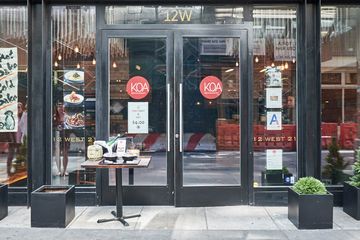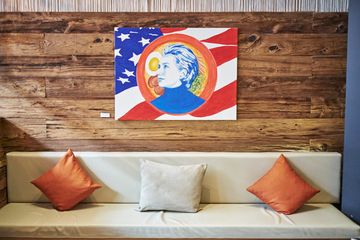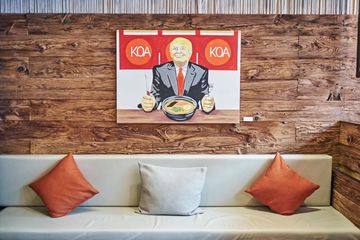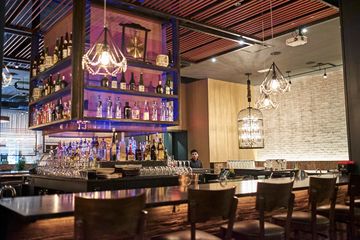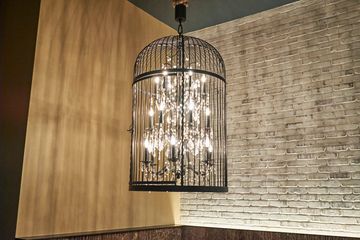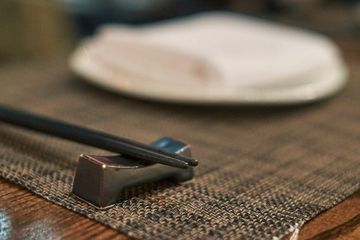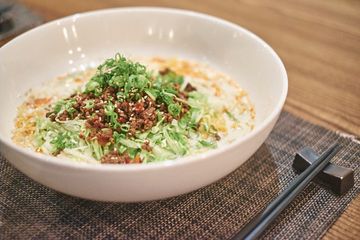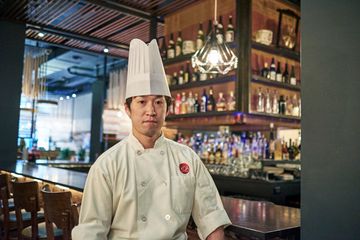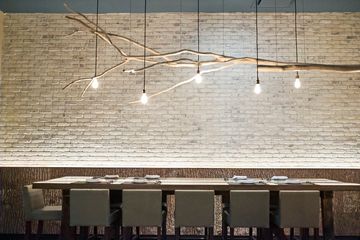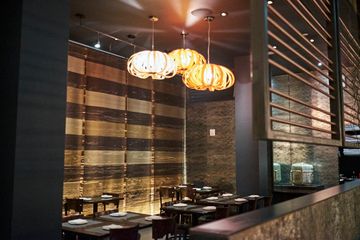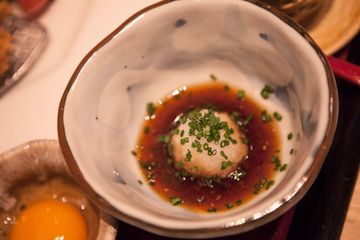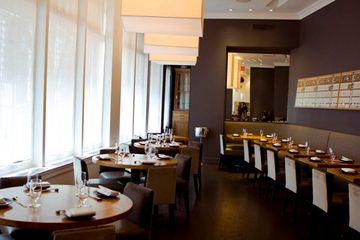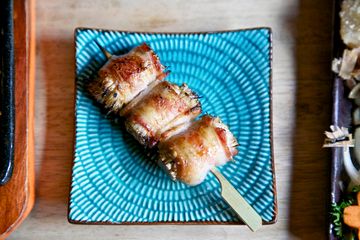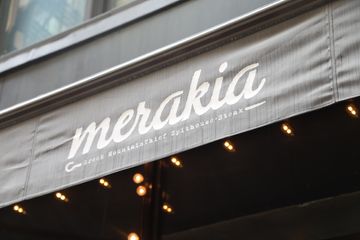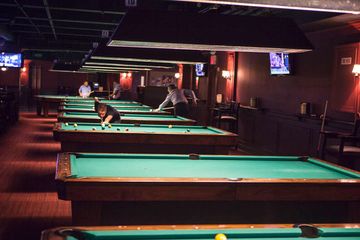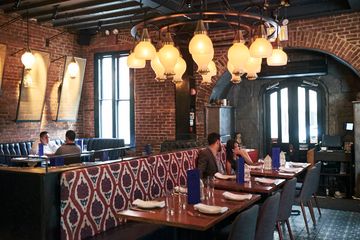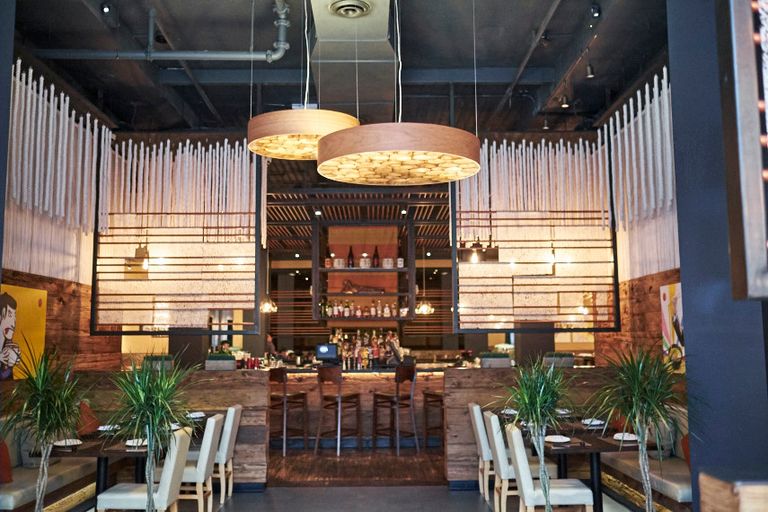
In a city that is known for making the most of space, I was surprised by how large Koa restaurant was. As with smaller eateries, however, Koa has managed to cleverly utilize each square inch. For example, as I walked in, Tenzin, the manager, pointed me towards the front lounge that functions as a sake bar with hot and cold Gekkeikan on tap. “Sometimes people just come in for sake,” he told me before leading me farther into the restaurant. Along the walls of the lounge were clever paintings depicting political candidates. Tenzin explained that every Friday, the artist comes in and holds a painting party where guests can observe him while dining.
Marveling at the unique décor in the main dining room, created by a Hawaiian designer, I glanced up to see chandeliers sitting in large bird cages, long driftwood branches, and ropes and pieces of string dangling from the high ceiling, which are meant to represent “sorba,” the noodles on which Koa prides itself. A filmed fashion runway was projected on the wall in black and white. Tenzin informed me that the owner, Keiko Ono Aoki, loves fashion. Keiko, who is the widow of Rocky Aoki, the former Olympic wrestler and founder of the Benihana chain of restaurants, had a hand in every aspect of Koa, which is named for her initials. “She wants it to be trendy-friendly,” Tenzin said of the vibe. Keiko often holds interesting events in the space, such as DJ nights on Thursday and live music sessions. She is hoping to put on a fashion show in the restaurant in the near future. “Keiko wants people to experience something different,” Tenzin said, adding, “This place is for entertainment purposes.”
I was impressed by how many different styles of seating were present: There were low Japanese-style seats, traditional dining chairs, and communal tables. Keiko clearly has put a lot of energy and creativity into the restaurant. “She is here all the time: this is her little baby,” Tenzin said with a smile.
Yuji Wakiya is Koa’s executive chef, but he spends most of his time in Japan now that the restaurant’s menu is set. He returns two or three times a year, however, and offers special tastings that result in "lines out the door." We met Chef Wakiya’s protégé, who brought out one of the restaurant’s signature dishes, the Soymilk Dan Dan Sorba. He shared with us that when Keiko was getting ready to open Koa, she was aware that ramen was going to be the "next big thing." Therefore, the restaurant's primary focus is on this noodle and broth dish. The Manhattan Sideways team tucked into the aromatic sorba and discovered that Tenzin was right when he said that it has “less broth and more toppings” than most ramen. Because the dish was made with soymilk imported from Japan rather than milk, it was fresh and light, with the perfect amount of spice on the pleasantly textured noodles. Tenzin assured me that though the emphasis is on ramen, Koa’s menu is varied. “No one wants hot ramen in the summer,” he pointed out, telling me about the Jya Jya Sorba Salad which is made with cold ramen, peanut butter, sesame puree, and Bang Bang Chicken. There is also a ramen served with parmesan cheese and walnuts. “It’s a fusion – we’re not traditional.”

